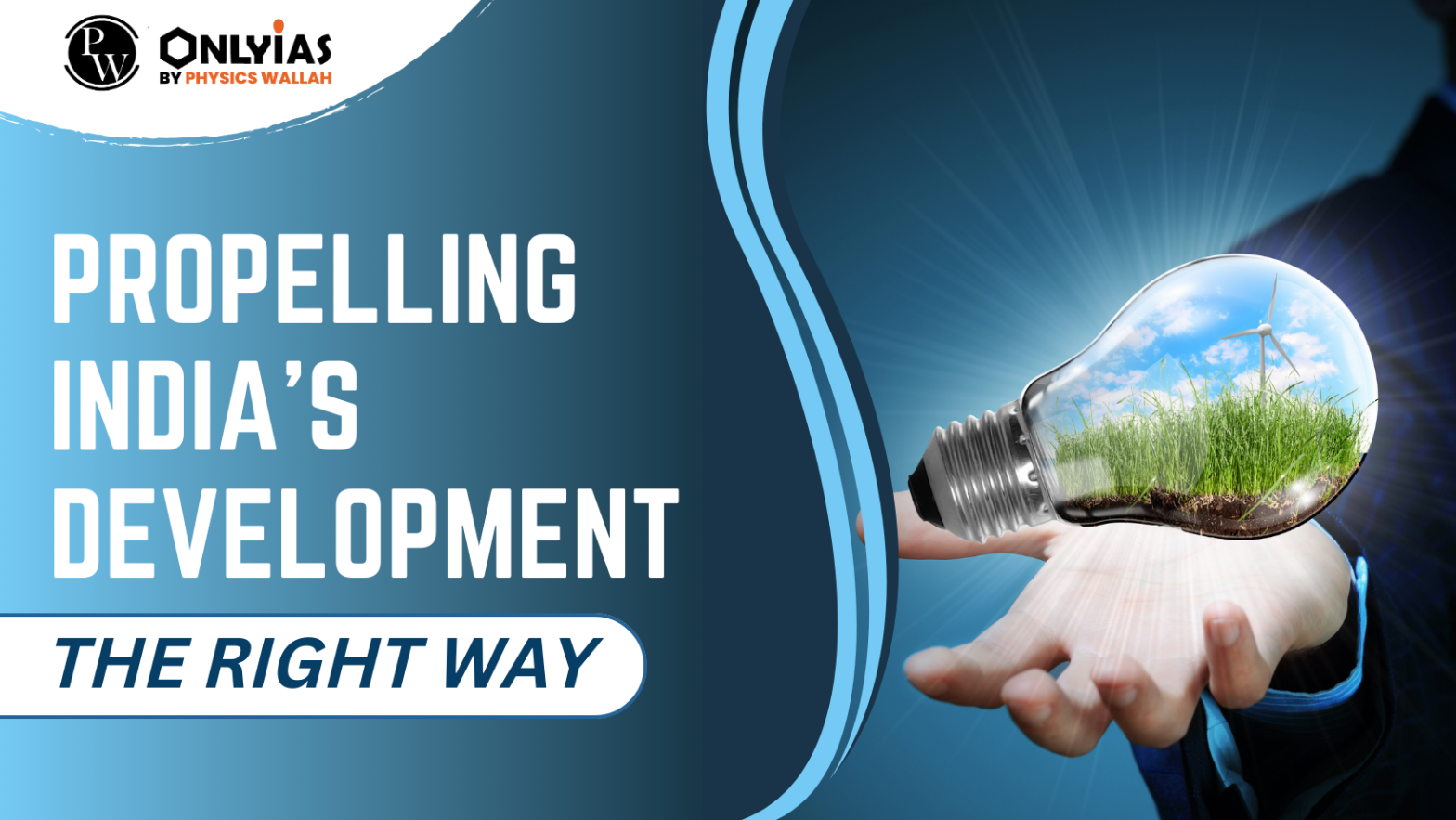Context: This article is based on an Editorial “Propelling India’s development the right way” which was published in The Hindu. This article delves into India’s development narrative, drawing parallels between its exceptional advancements in space exploration and persistent socioeconomic disparities.
India’s Development Journey: From Space to Innovation
- Research Programmes: Before ISRO’s set up in 1969, India has a significant research programme in space research programme coordinated by the Department of Atomic Energy from the early 1950
- Indian Institutes of Technology (IITs): Between 1951 and 1961, India established five Indian Institutes of Technology to promote its innovation and development .
- Industrial Production: During the 1950s and 1960s, a number of public sector units were established in diverse areas of industrial production that included steel, fertilizer, machine tools, electric machinery, drug production, and petrochemicals.
- Technological Capabilities: In India, the technological capabilities built through state support provided the base for the flourishing of private enterprise in many sectors, including pharmaceuticals, information technology, and the space sector too.
- Strategic Importance: Professionals, who were earlier trained in India’s public universities, have found leadership positions globally, which has deepened India’s strategic importance.
- Conquer Lunar South Pole: India became the first nation to land a rover on the south pole of the moon, followed up with a mission to study the sun.
“Vikram Sarabhai: Pioneering Development Through Innovation”
- Satellites for Development: He had envisioned in the early 1960s that satellites could be used for building a nationwide telephone system and for providing agricultural and health education.
- A Moonshot Approach: The momentous steps India had taken in the decades immediately after Independence may be characterized as a ‘moonshot’ approach to development, “deploying modern industrialisation to shake off the ills of the past”.
“Challenge with India’s Moonshot Development: Investment and Strategy”
- Over Reliance on Public Investment: Heavy reliance on public investment.
- Misdirected investments: Being a labor surplus country, many economists argue, India should have stuck to its comparative advantages in labor-intensive industries rather than in capital- and technology-intensive industries.
- Infrastructure Bottlenecks: The rapid expansion of technology-intensive industries often outpaces the development of supporting infrastructure.
- Skilled Workforce Shortage: Shortage of adequately skilled workers in high-tech industries, affecting productivity and competitiveness
“Inequalities’ Impact on Development and Education”
- Reason of Prevalence: The state or the government could not intervene effectively to reduce inequalities or ensure social development.
- Role of Education in Inequalities: For the downtrodden, disadvantages due to the lack of assets translate into hurdles in acquiring education. As a result, inequalities in the social spheres get replicated in the labor market requiring higher education.
- Example: As per Periodic Labour Force Survey data, in 2021-22, 38.2% of all SC workers were ‘casual’, earning their livelihoods mostly out of hard manual labor while 11.2% workers belonged to the general category.
- Impacts of Inequalities on inclusive development: The persistence of inequalities has negatively impacted industrial and economic growth in India, which has slowed down the growth of manufacturing of high-quality, mass-consumption goods, including food products and garments.
“Charting the Way Forward for India’s Development”
- Reinstate State Support: India must reinstate its ambitious development efforts to grow fast in economic fields, be it semiconductors or biotechnology.
- The government must again need to provide support on planning for industrial growth.
- Promote Inclusive Growth: India must redouble efforts to make economic growth more inclusive and broad-based.
- Accessible Education to All: Education, especially higher education, should be accessible to all, including the dispossessed.
- Inculcate Social & Human Capabilities: India’s mission to use technology to propel itself to a higher level of development is a good step and now it’s a time to create strong masses of high social and human capabilities to achieve economic progress.
- New and advanced technologies would quicken the pace of development of the country.
Conclusion
- In the journey of India’s development, we’ve seen remarkable strides in space exploration and technological prowess. It’s time to channel that same spirit towards addressing our social and economic disparities. By reinstating state support, promoting inclusive growth, and ensuring accessible education for all, we can build a brighter future where no one is left behind. Let’s harness the power of innovation and human capabilities to propel India towards greater prosperity, with a strong belief that new technologies will help us achieve our dreams. Together, we can make a difference in the lives of millions.
![]() 22 Sep 2023
22 Sep 2023

